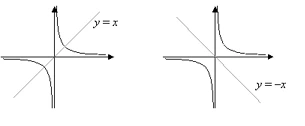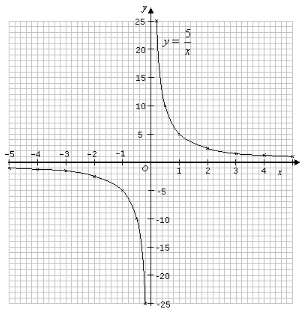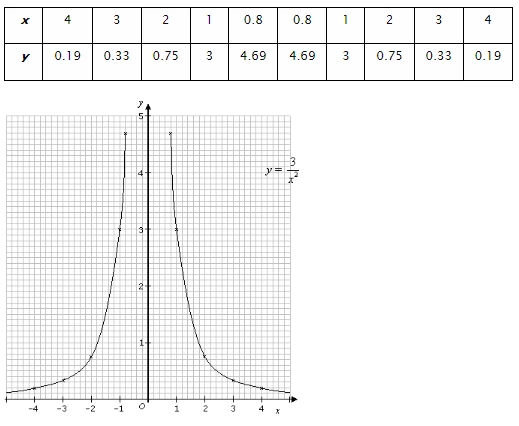Square root reciprocal function and properties
What is Square root reciprocal function and properties?
There are several forms of reciprocal functions. One of them has the form y = k/x,
where ‘k’ is a real number and x ≠ 0.
Get to know about the characteristics of the Graph of a Reciprocal Function
The graph of y = k /x gets closer to the x-axis as the value of x increases, but it never meets the x-axis. It is called the horizontal asymptote of the graph.
Each portion of the graph also gets closer to the y-axis as x approaches to zero, but it never meets the y-axis, since there is no such value for y when x = 0. This is known as the vertical asymptote of the graph. The particular type of curve is called a rectangular hyperbola.
Note that this type of curve, the graphs of y = k/x, where k is a real number and x ≠ 0,
has two lines of symmetry that are y = x and y = - x.

Graphical representation of reciprocal functions by plotting points
Example:
Draw the graph of y = 5 /x for values between 4 and 4, except for x = 0.
Solution:

The curve consists of two separate pieces, but they should be regarded as one graph

Another form of reciprocal functions is y = k/x2, where k is a real number and x ≠ 0.
Example:
Draw the graph of y = 3/x2 , 4 ≤ x ≤4 and x ≠ 0.
Solution:

Notice that graphs of y = k/x2, where k is a real number and x ≠ 0, has an axis of symmetry on the y-axis (i.e. x = 0)




Similar Questions
Reciprocal squared function and properties
View SolutionProve that the sum of the squares of the reciprocals of two perpendicular diameter of an ellipse is constant.
View SolutionExplain Reciprocal functions with graph
View Solutionfind the non negative square root of product of reciprocal of roots of thhe equation (log210x)+log10(x2)=log2102−1
View SolutionFind the non negative square root of product of reciprocal of roots of the equal to: log210x+log10x2=log2102−1
View SolutionDraw the graph of the reciprocal function f(x)=1x
View SolutionLaws OF exponent OF nth root OF number|| Radical||Interval||Inequality|| Modulus function properties OF modulus function
View SolutionIf the sum of the roots of ax2+bx+c=0 is equal to the sum of the squares of their reciprocals, then which one of the following relations is correct?
View SolutionThe equation whose roots are reciprocals of the roots of the equation f(x)=0 is
View SolutionWhat is Reciprocal of a function ? explain it by giving an example .
View Solution
